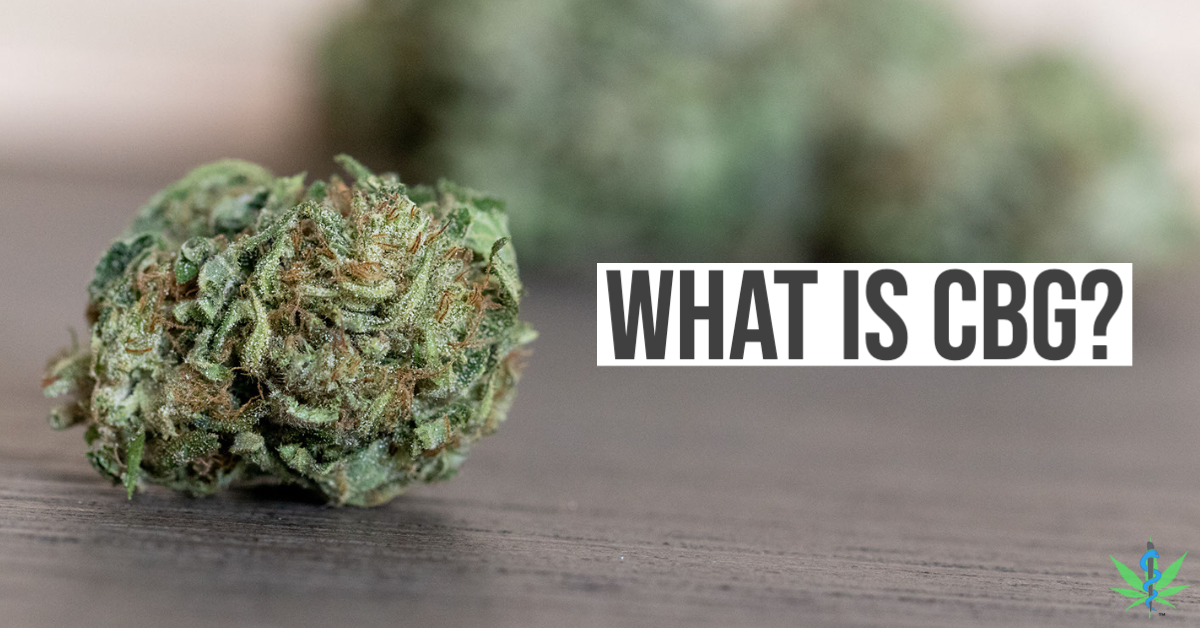While THC and CBD get all the recognition, other cannabinoids in the cannabis plant, called minor cannabinoids, also deserve some attention. CBG is the third most prevalent cannabinoid in the cannabis plant. While considered a minor cannabinoid as it’s not as abundant as the big two, it’s not minor in power. We hear from patients often how CBG is helping their pain, mood, and other symptoms. So what’s the rundown? We’ve got you with today’s post.
The Building Block of Cannabis
Cannabigerol (CBG) is the precursor to almost all other cannabinoids in the cannabis plant. This means without CBG initially, there is no THC. During the flowering stage of cannabis growth, Cannabigerolic Acid (CBG-A), the acid form of CBG, is found in considerable quantities. Over time and after a series of internal reactions, CBGa transforms into THCa or other cannabinoids. In modern cannabis plants, the large majority of CBGa becomes THCa or CBDa, and a fraction remains CBG (typically less than 1%).
Where does CBG come from?
Cannabigerol-Acid (CBG-A) is produced exclusively by and within the cannabis plant. It’s the primary parent to most other cannabinoids, often called the ‘stem cell’ of cannabis. As the plant grows, CBGa content is produced internally and naturally increases. As it is exposed to UV light, and during a few weeks of the flowering cycle, CBGa undergoes a chemical process with enzymes in the plant and transforms into THCa, CBDa, or other cannabinoids. At harvest, there is typically less than 1% of CBGa/CBG remaining.
Some cultivators have selectively bred strains that have higher concentrations of CBG at harvest. Their efforts have expanded access to CBG and allows users to experiment with various cannabinoid blends easily.
The benefits of CBG
Like much of cannabis, gold-standard clinical human studies on CBG are lacking. The legal landscape just doesn’t allow for it. However, animal research on CBG is promising.
Potential benefits may include:
Anti-inflammatory
Antiseptic, antibiotic, and antifungal properties
Bone stimulation
Blood pressure reduction
Inhibition of tumor growth
Anti-depressant
Reduce intraocular pressure
CBG-Rich Cannabis Flower
CBD-Rich Cannabis Flower
CBG is non-psychoactive, meaning it does not produce a high. In fact, similar to CBD, CBG may reduce the high of THC by binding to the same CB1 receptor. This makes it a potential option for patients wishing to use cannabis but avoid the psychoactive effects.
CBG may be beneficial for gastrointestinal conditions, with research suggesting that it can reduce inflammation in the colon. Research also suggests that CBG may be a valuable appetite stimulant. Compared to controls, rats provided CBG consumed twice the amount of food without any impairment to basic motor functions. In human trials, CBG has displayed stellar results in regulating intraocular pressure related to Glaucoma.
Closeup of CBG-Rich Cannabis Flower
While we still have plenty of research to do on the potential human applications of CBG, we do know it’s helping lives now. Patients and cannabis users are incorporating CBG into their daily routines with many reporting benefits.











